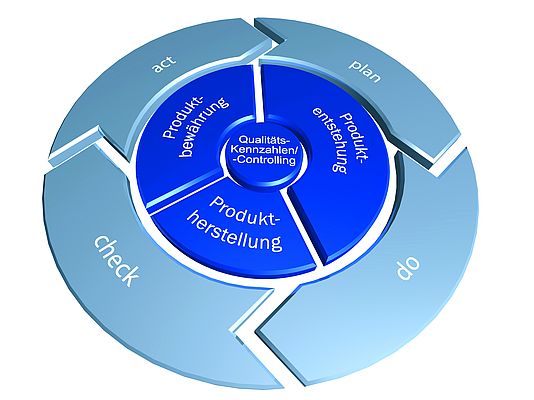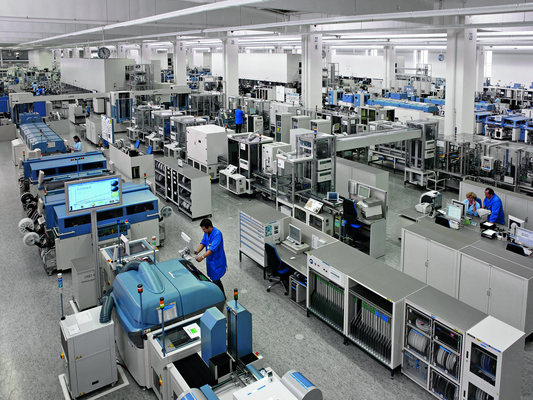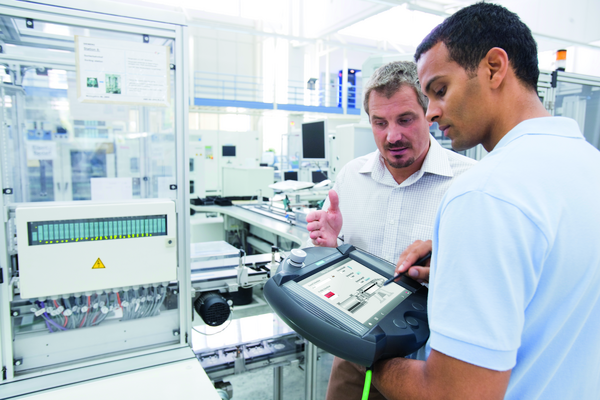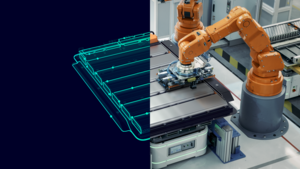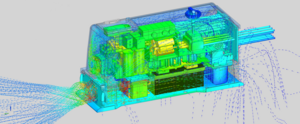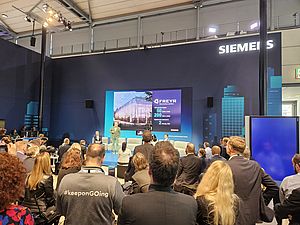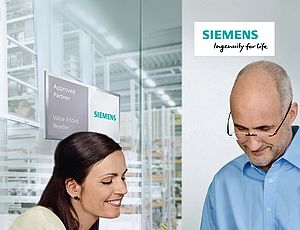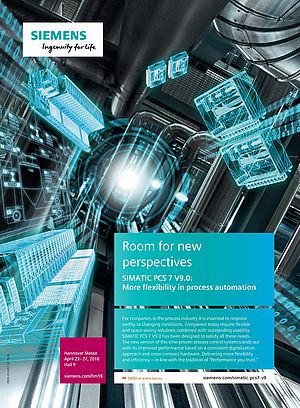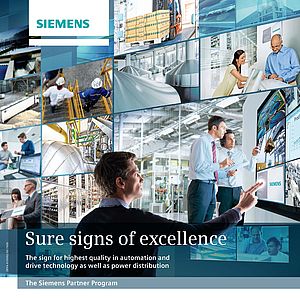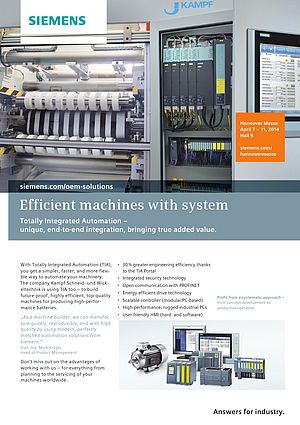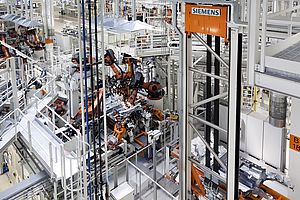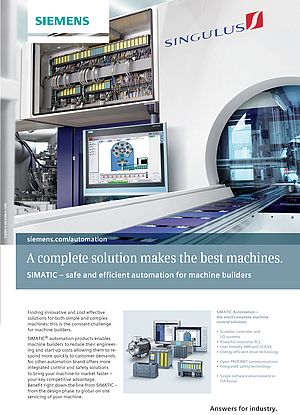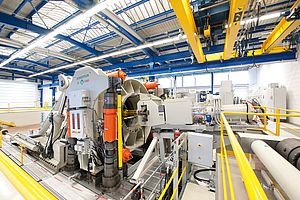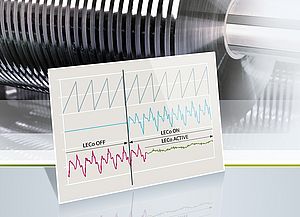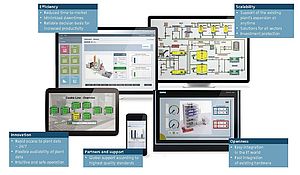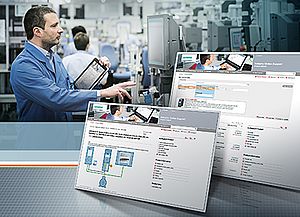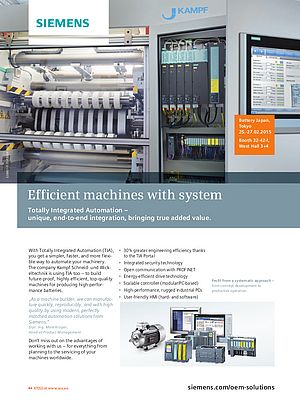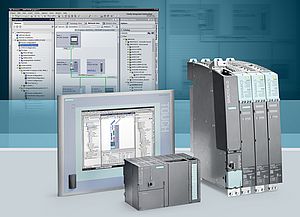Too many interfaces between the hardware and software systems used for quality assurance as well as gaps in quality management represent error sources in industrial processes. Thorough quality planning of both product development and production is essential for quality assurance. The selection of the right software and automation systems in order to enable efficient interaction plays an important role here. In the future, integration to form a uniform data platform is to allow consistent data flows. This will result in a Digital Enterprise Platform, the prerequisite for the integration of virtual and real world.
Those who are following the current future scenarios, in which components, modules, production systems and assembly systems communicate with one another, ask themselves questions such as: Who defines and monitors quality? Future factories will be faced with the challenge of ensuring consistent quality management across all product development and production processes. For communication of relevant data, from quality planning to defect tracking, to even be possible, definitions and data formats must be correct. Already today, Siemens is working on achieving this consistency with software solutions for three dimensions of quality management: the strategic view of management, the definition of quality in product development and factory planning, and quality monitoring in production.
From the point of view of the quality coordinators, company-wide strategies for organization must be implemented - from the definition of quality objectives to supplier monitoring. MES- and ERP-related solutions from IBS AG, which was recently acquired by Siemens, are suitable for this purpose. From the perspective of product development and factory planning, technical quality criteria and the conditions for their implementation must be put in place. With Tecnomatix solutions for digital factory planning and Teamcenter from the Siemens PLM software portfolio, product development, production engineering, quality planning and quality optimization can be closely interlinked. At the manufacturing level, the Simatic IT MES portfolio ultimately ensures the smoothest possible realization of processes and technical specifications. Thanks to Totally Integrated Automation (TIA), the open and consistent system architecture from Siemens, automation systems for quality data acquisition and their communication to higher-level order and production control systems can be implemented successfully at the manufacturing level.
Optimum quality planning in product development saves costs
Quality data are created throughout the entire value chain - but their starting point is during product development. At this stage, quality specifications are defined and implemented in the CAD system. If quality planning is not performed with care, unnecessary costs are incurred in the subsequent steps. Planning which covers all subsequent process steps also reduces the time to market and guarantees the defined quality at the calculated manufacturing price. With Tecnomatix Quality Management, CAD tolerances of individual components can then be checked in interaction. Using variation analyses, individual tolerances can be adapted in order to achieve the required quality at optimum manufacturing costs: In many cases, unnecessarily high requirements on individual components lead to undesired follow-up problems in assembly and maintenance processes. If the quality requirements are defined correctly, the exact dimensions are used seamlessly as the basis for measurement programs for 3D coordinate measuring machines which can be created and checked with the software. With analysis and reporting functions which allow direct comparison of measurement plans and actually measured results in a 3D environment, any quality problems in the production process are thoroughly analyzed, compared with earlier occurrences, and resolved quickly and permanently.
The CAQ=QSYS quality solutions from IBS are the right choice to link the development and planning of individual products with standards valid throughout the whole company, such as FMEA (Failure Mode and Effects Analysis). They extend from preparation, through evaluation with derivation of measures, all the way to monitoring the implementation. In addition to the structured procedure according to the FMEA method by the system, automated controlling of the measures offers a further significant benefit. Predictive planning is operated here on a scale which applies throughout the company - embedded in comprehensive solutions for quality management. Direct data transfer from the CAD software facilitates derivation of the right test points, test equipment and tolerances. It is also simple to create control plans that determine which quality data is required where and when. Manual inputs and Excel lists, which represent error-prone duplicate work in many companies, are no longer necessary thanks to database interfaces.
Quality measurement in production equipment by means of TIA
When factory planners select and place the individual machine tools, interlinked manufacturing centers, and production or assembly lines during production engineering, they also define the selection and interaction of suitable automation systems. The acquisition of quality data plays an important role here: It is not enough to place sensors, cameras, electronic control gauges and measuring inputs - the data and logs must be incorporated in testing and production processes. In this regard, Totally Integrated Automation (TIA) provides valuable support through simple engineering and consistent communication.
The measured data of automatic testing devices acquired automatically during production flow into CAQ=QSYS and form the basis for visualization and comparison with the test plans which were generated by the connection to the PLM system. Specific evaluations reduce errors, increase quality, and allow optimization of new products in development. The control loop of integrated quality management ends here.
Producing quality
If the strategic and operational quality preparations are carried out in good time, companies are rewarded with shorter startup times in production and lower costs for adjustments and corrective work. With respect to the three dimensions of quality management mentioned, the various solutions from Siemens cover all important facets for assuring product and process quality: the quality management system, the product-related and production-related engineering support, and the integrated automation technology. These combine to meet the requirements of quality management: The online detection and immediate elimination of quality problems is a top priority. It is only possible to systematically and sustainably achieve a reduction of error and quality costs with the closely interlinked detection and control of incoming goods, process inspection of supplied raw materials, semi-finished products or components, and documentation of quality data.
All quality management systems demand continuous improvements. The basis for this is formed by regularly performed evaluations of quality data for reporting. This includes customer-specific reports, documentation of quality processes, and the identification and presentation of trends for internal decision-makers in combination with data from production planning.
Cost benefits and competitive advantages
Costs for incorrectly planned, produced or supplied quality are incurred at many points. Quality specifications that are too high also result in material damage, such as inadequate fulfillment or errors - with costs for corrective work and production changes. The risk of quality defects can be reduced most effectively with close integration of the hardware and software components involved in quality processes. Each additional interface, each media break and each system change pose new error risks. In addition, tracing products and components becomes more difficult and the ability to solve problems is impaired.
For this reason, Siemens' long-term development strategy stipulates even greater integration of individual solutions on a uniform data platform - the "Digital Enterprise Platform". This will ensure that media breaks no longer occur between the different stages of a product life cycle - from the initial concept, through manufacturing, all the way to servicing. In this way, all data flows between the individual value stages are consistent in all directions. The virtual and real worlds of product and production converge. Based on this comprehensive integration, a "Digital Enterprise" can be set up, providing the prerequisite for the vision of merging of virtual and real world.


